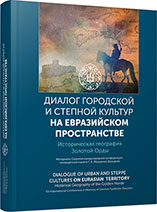Могильник Окошки I в юго-восточном Забайкалье и некоторые аспекты идентичности монголов в XIII—XIV вв.
The Okoshki 1 Burial Mound Site in South-Eastern Transbaikalia and Some Aspects of the Mongol Identity in the 13th and 14th Centuries
Author(s): Artur V. Kharinsky, Evgeny V. Kovychev, Nikolay Nikolaevich Kradin
Subject(s): History, Archaeology, Middle Ages, 13th to 14th Centuries
Published by: Издательский дом Stratum, Университет «Высшая антропологическая школа»
Keywords: Trans-Baikal region; Mongolian period; Mongols; funerary ritual; grave pit; grave mound; coffin; sheep bones
Summary/Abstract: The funerary ritual of 14 graves from the Okoshki 1 burial mound site in South-Eastern Transbaikalia is analyzed. The data from the Okoshki 1 burial mound and other funerary sites of the Baykal region are used in order to define elements of the Mongols’ funerary ritual in the 13th—14th centuries. Basic elements of the funerary ritual are: a) vertical grave pit; b) stone grave mound; c) a single skeleton in a grave; d) dead body lying on the back (supine skeleton). Additional elements of the funerary ritual include: a) wooden chamber; b) north or north-east orientation of the dead; c) presence of sheep bones in the grave (tibia, scapula, and lumbar vertebrae).
Book: Диалог городской и степной культур на Евразийском пространстве. Историческая география Золотой Орды
- Page Range: 65-68
- Page Count: 4
- Publication Year: 2016
- Language: Russian
- Content File-PDF

